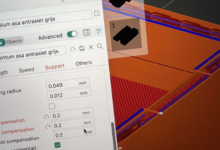Step-by-Step Guide to Trading Solana USDT: Tips for Beginners

Solana (SOL) has rapidly emerged as one of the most promising cryptocurrencies in the market. Known for its speed, scalability, and low transaction fees, Solana has attracted a large community of traders and investors. However, navigating the world of cryptocurrency trading can be overwhelming for beginners. In this step-by-step guide, we will walk you through the process of trading Solana (SOL) against Tether (USDT), also known as Solana USDT, and provide you with essential tips to help you become a successful trader.
1. Introduction to Solana and USDT
What is Solana?
Solana (SOL) is a high-performance blockchain platform designed for decentralized applications (dApps) and cryptocurrency transactions. It was created to address the scalability and high transaction fees that exist on other platforms like Ethereum. Solana aims to provide a fast, secure, and scalable solution, processing thousands of transactions per second, making it one of the most promising blockchains in the crypto space.
Why Trade Solana USDT?
USDT (Tether) is a stablecoin pegged to the US Dollar, which means its value remains relatively stable compared to other cryptocurrencies like Bitcoin or Ethereum. Trading Solana USDT pairs gives traders the opportunity to buy or sell Solana using a stable asset like USDT, reducing exposure to volatility while providing opportunities to capitalize on Solana’s price movements.
2. Setting Up Your Crypto Wallet
Before you begin trading, you need a secure wallet to store your Solana and USDT. There are two types of wallets: hot wallets (online wallets) and cold wallets (offline wallets). Here’s what you need to know:
Choosing a Secure Crypto Wallet
- Hot Wallets: These are connected to the internet, making them convenient for trading. Examples include MetaMask, Trust Wallet, and Sollet for Solana.
- Cold Wallets: These are hardware wallets like Ledger or Trezor, providing enhanced security by keeping your assets offline.
How to Set Up and Fund Your Wallet
- Download a reputable wallet and create an account.
- Secure your private keys (never share them).
- Transfer USDT or Solana from your exchange to your wallet for safekeeping.
3. Understanding the Solana-USDT Trading Pair
What Is the Solana-USDT Pair?
The Solana-USDT pair is a trading pair that allows you to exchange Solana (SOL) for Tether (USDT) or vice versa. The price of Solana in terms of USDT fluctuates based on market demand and supply. When the price of Solana goes up, you can sell your Solana for a higher amount of USDT.
The Importance of Liquidity in Trading
Liquidity refers to how easily an asset can be bought or sold without affecting its price. High liquidity in the Solana-USDT pair ensures that you can trade quickly and at fair market prices.
4. Selecting the Right Exchange for Trading Solana USDT
Key Features to Look for in an Exchange
- Security: Look for exchanges with high security measures, including two-factor authentication (2FA).
- Low Fees: Lower fees mean more profit from your trades.
- Liquidity: Choose exchanges with high liquidity in the Solana-USDT pair to ensure smooth transactions.
- User Interface: A user-friendly interface is essential, especially for beginners.
Top Exchanges for Solana USDT Trading
- Binance: Known for its vast range of cryptocurrencies and low fees.
- FTX: Offers excellent Solana trading features and liquidity.
- Coinbase: A beginner-friendly platform with an easy-to-use interface.
5. How to Buy Solana Using USDT
Step 1: Create an Account on Your Chosen Exchange
Register with your chosen exchange by providing basic personal information and verifying your identity.
Step 2: Deposit USDT into Your Exchange Account
Transfer USDT from your wallet to the exchange by using the deposit feature. Some exchanges also allow direct transfers from bank accounts or other wallets.
Step 3: Placing Your Buy Order for Solana
- Select the Solana-USDT trading pair.
- Choose the amount of Solana you want to buy.
- Place a market or limit order based on your strategy.
Step 4: Confirming Your Trade
Once your order is filled, you’ll receive Solana in your exchange account. From here, you can either hold it or transfer it to your personal wallet for added security.
6. How to Sell Solana for USDT
Step 1: Choose the Amount to Sell
Select the amount of Solana you want to convert back to USDT.
Step 2: Place a Sell Order
You can sell at the current market price (market order) or set a specific price (limit order).
Step 3: Monitoring the Market
Keep an eye on the market to see how the price of Solana is moving. You can also set up alerts on most exchanges to notify you when your target price is hit.
7. Understanding Market Orders vs Limit Orders
What Is a Market Order?
A market order buys or sells an asset at the best available current price. It’s ideal for quick transactions but may result in slippage (a slight difference in price due to market fluctuations).
What Is a Limit Order?
A limit order allows you to set a specific price at which you want to buy or sell. The order will only be filled if the market reaches your desired price.
When to Use Market Orders vs Limit Orders
- Market orders are best for immediate execution.
- Limit orders are ideal for strategic buys and sells at specific price points.
8. Analyzing Market Trends and Indicators
Understanding Technical Analysis
Technical analysis involves analyzing price charts and indicators to predict future price movements. Key indicators for Solana trading include Moving Averages, RSI (Relative Strength Index), and MACD (Moving Average Convergence Divergence).
Key Indicators to Watch for Solana-USDT Trading
- Volume: Higher volume indicates stronger market interest.
- Price Action: Study candlestick patterns for trend indications.
- Support and Resistance Levels: Key price levels where Solana tends to bounce or face resistance.
9. Risk Management in Solana USDT Trading
The Importance of Setting Stop Loss Orders
A stop loss is an order placed to sell an asset when it reaches a certain price to limit your losses. This is especially important in the volatile world of cryptocurrency trading.
Diversification and Portfolio Management Tips
Avoid putting all your capital into a single trade. Diversifying your portfolio reduces risk and helps you manage potential losses effectively.
10. Common Mistakes to Avoid in Solana USDT Trading
Overtrading and Emotional Trading
Many beginners make the mistake of overtrading due to emotional responses to market fluctuations. It’s important to stay calm and stick to your strategy.
Ignoring Security Best Practices
Always ensure that you’re using secure exchanges, wallets, and practices. Enabling two-factor authentication and never sharing private keys will keep your assets safe.
11. Advanced Trading Strategies for Experienced Traders
Swing Trading Solana-USDT
Swing trading involves holding an asset for several days or weeks, aiming to capitalize on price swings. It requires strong technical analysis skills and market timing.
Scalping and Day Trading Tips
For more experienced traders, scalping involves making small profits on rapid trades. Day trading requires a deep understanding of short-term market movements and precise execution.
12. Tax Implications of Trading Solana USDT
Understanding Capital Gains Tax for Crypto Traders
In many jurisdictions, profits from trading cryptocurrencies like Solana are taxable. You will need to report your capital gains on tax returns.
Reporting Your Profits
Keep track of your trades, including buys, sells, and profits, for accurate tax reporting.
13. Staying Up-to-Date with Solana News
The Importance of News and Market Sentiment
Crypto markets are highly influenced by news events. Always stay informed about Solana’s developments, partnerships, and updates to anticipate price movements.
Sources to Follow for Solana Updates
- Solana’s official Twitter account
- Crypto news websites like CoinDesk and CoinTelegraph
14. Frequently Asked Questions (FAQs)
Q1: How do I know when to buy or sell Solana?
A1: Keep an eye on market indicators and trends. Utilize technical analysis to understand price patterns.
Q2: Is Solana a good investment?
A2: Solana’s fast transaction speeds and scalability make it an attractive investment for those looking for a promising blockchain.
Q3: Can I trade Solana directly for USDT on all exchanges?
A3: Yes, many exchanges offer the Solana-USDT trading pair.
Q4: What is the best strategy for a beginner in Solana trading?
A4: Start with market orders and practice with small amounts until you understand market trends.
Q5: How do I store my Solana safely?
A5: Use a secure wallet with good security practices, like a hardware wallet.
Q6: How can I reduce risk in Solana trading?
A6: Use stop loss orders and diversify your investment portfolio.
15. Conclusion: Getting Started with Confidence
Trading Solana USDT can be an exciting and rewarding venture, but it’s essential to approach it with a well-thought-out strategy and proper knowledge. By following the steps and tips outlined in this guide, you can trade Solana confidently, minimize risk, and make informed decisions in this dynamic market.
With time, practice, and continual learning, you’ll be better equipped to navigate the world of cryptocurrency and harness its potential for profit.







